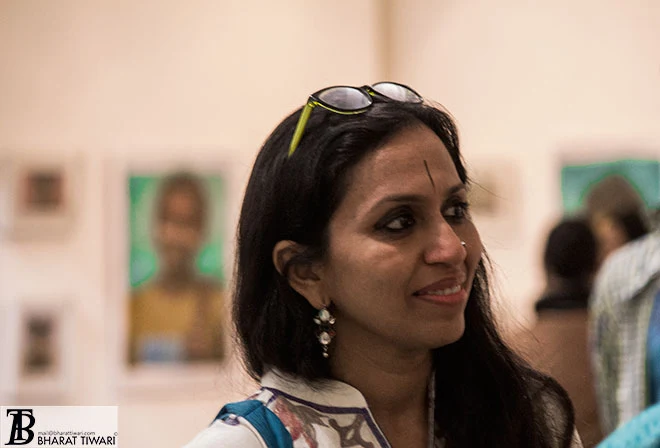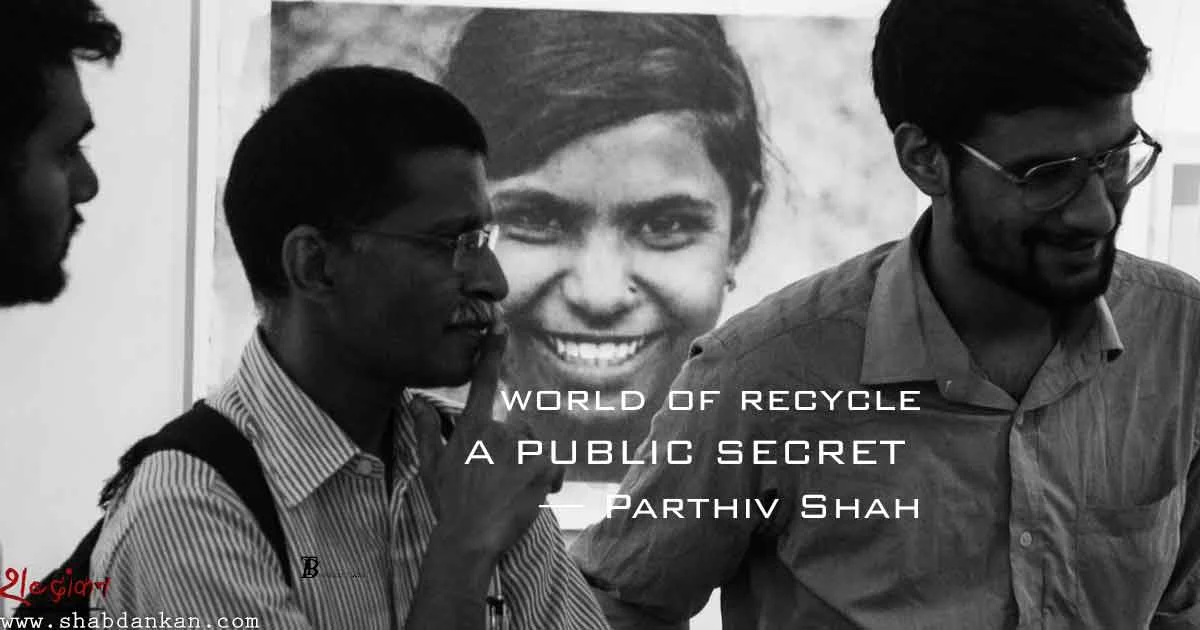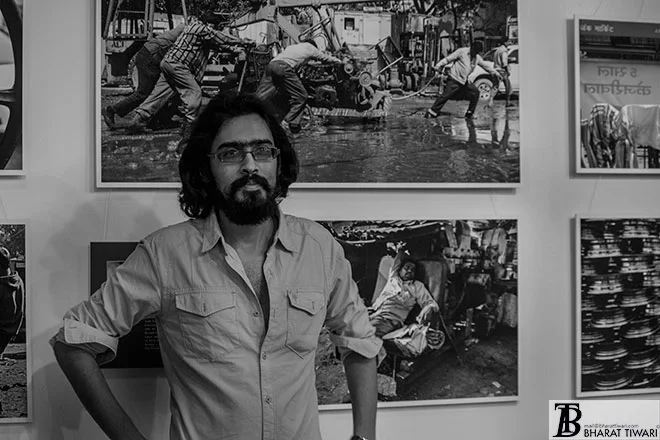 |
| Ashoke Chatterjee, Parthiv Shah, Aditya Arya & Samar S Lodha |
Gurus of Photography
— Bharat Tiwari
Photography is a visual documentation of time. It's an art that appeals to everyone but a mere photo click can't be art, one has to learn it with thorough dedication. Couple of years back someone told me, "Till you've clicked your first ten thousand photographs don't even think that you are a photographer", I felt awkward but now I know even a zero or two added in 10,000 can't make one a photographer less one is blessed with 'the eye' and ‘a guru’. |
| Ashok Khosla |
I could see it in the eyes of Swarat Ghosh, when he came to me asking “Did you like my work… I saw you taking photo of them”. A wonderful essay of rag-pickers by him made me stand and watch the life go by. The smiling hearts of photographer’s chosen for this project was telling me ‘we have arrived’! Not only their eyes communicating this but it was visible and audible from people present at the opening of the exhibition among whom were Ashok Khosla, co-chair of the United Nations Environment Programme’s International Resource Panel sporting a shawl made of recycled coke plastic, Professor Rajeev Lochan, Director of the National Gallery of Modern Art (NGMA) New Delhi, Parthiv Shah, photographer who as a jury selected and edited images for catalogue and the show, Bandeep Singh, Prabir Purkayastha , Vidya Shah, Dipankar Gupta, Harmala, Singh Samar Singh Jodha and Asha Rani Mathur, to name a few.
 |
| Rajeev Lochan |
 |
| Vidya Shah |
Here's the jury Parthiv Shah's analysis of the photographers chosen for project under the aegis of Neel Dongre Awards/Grants for Excellence in Photography (2016), a project aiming to providing a visual interpretation of the World of Recycle & Waste Management.
Bharat Tiwari
 WORLD OF RECYCLE — A Public Secret — Parthiv Shah
WORLD OF RECYCLE — A Public Secret — Parthiv Shah

 |
| Jury's presence, Parthiv Shah |
ॐ
पूर्णमदः पूर्णमिदम् पूर्णात् पूर्णमुदच्यते ।
पूर्णस्य पूर्णमादाय पूर्णमेवावशिष्यते ॥
Om
That is the whole, this is the whole;
from the whole, the whole becomes manifest;
taking away the whole from the whole,
the whole remains.
Om. Peace! Peace! Peace!.
Recycling is a western term which was made popular sometimes in late 60’s. Humans thought that the earth has enormous resources but soon they realized that this will all go away very soon! Interestingly
In our part of world we had very little material resources and our ancient culture always believed in reincarnation and that we brought in day to day practice. In India even now a Saree becomes a cradle which becomes a quilt and turns in to a mop and sometime even a wick of lamp!
Recycling is not new to us but when western technology and material has taken over our lifestyle it is but natural that we have to think differently. One can see in local haat (weekly bazaar) of village bags and spice boxes made out of oil containers, hand-fans made out of tobacco gutaka pouches, rubber chappals made of truck tires etc.
Recycling is a hard and dirty job, mostly carried out by the lowest strata of society. To document these people and their work in camera is a real daunting task. This year nine young photographers have approached this subject in a very unique way. Some have concentrated on the human aspect while some have captured the visual play.
 |
| Cheena Kapoor |
 |
| Manu Yadav |
Monica Tiwari’s Dust is work of irony, the candidness captured by the camera stands in striking contrast to the harsh realities of the occupational hazards, the lack of basic infrastructure and education. The children at the landfill occupy the frames, and the sentiment that plays out in its characteristic loud refrain is that of a practiced indifference. Landfills and garbage dumps have been shot by hundreds of photographers across the world and it is quite a challenge for any photographer to humanise this landscape. Children in all her frames remind in a way of the unfairness of policy measures that turn these landscapes of ‘dust and garbage’ into compromising means of survival.
 |
| Rahul Sharma |
 |
| Saumya Khandelwal |
 |
| Siddharth Behl |
 |
| Shweta Pandey |
 |
| Sreedeep |
 |
| Swarat Ghosh |
The present series is a testimony to the idea of ‘Public Secret’- something that is known, but fails meaningful articulation. The stories of waste recycling in India do not constitute a narrative that is new but a narrative that has been abandoned to a culture of compromise. The photographs in the series provide for a humane exposition of the issues concerning waste management in India. Covering multiple stories - scrap-dealers, construction waste, rag-pickers, recycled handicrafts and second hand markets - these works highlight the marginalisation faced by the disadvantaged and the layered narratives within.
It is good to know that the platform through this series is contributing to the mainstreaming of a marginal public issue which we as a community have been dedicated to over the years.
These photographs shall hopefully bring more voices and greater interest to the discourse that is mostly limited to closed circles. In their own ways they are attempts at articulation, of these many encounters with the ‘invisible’, that are generally avoided.
००००००००००००००००










0 टिप्पणियाँ